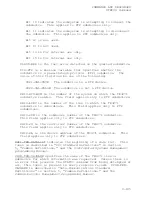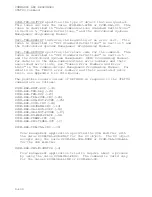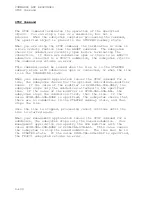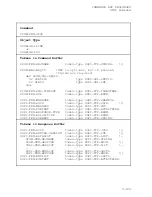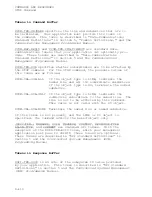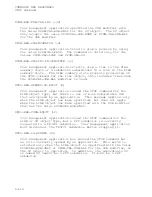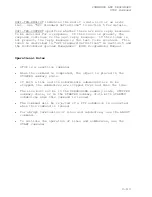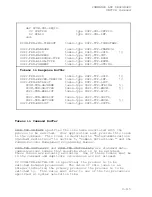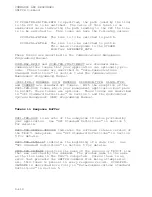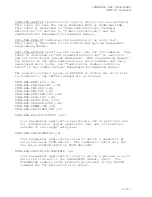
COMMANDS AND RESPONSES
TRACE Command
TRACE Command
The TRACE command allows your management application to capture
and store records that can be displayed using the PTRACE command.
The TR3271 subsystem does not support the TRACE command directly.
Instead, your management application issues the command to SCP,
which then invokes the CMP Trace Collector (CMPTC). The CMPTC
sends a CMP-format LCB to the TR3271 subsystem to start tracing
the selected records.
When your management application issues the TRACE command,
the specified line enters trace mode. The trace parameters
specified by your management application in ZCOM-MAP-TRACE-MODIF
control the initiation of the trace file, the selection of the
trace environment, and termination of trace mode. This fixed
structure, along with one or more ZCOM-TKN-TRACE-OPT tokens are
sent to SCP. The ZCOM-TKN-TRACE-OPT tokens are the trace options
selected by your management application.
From these trace options, which have enumerated type values, the
SCP creates a bit mask that is sent to the subsystem. The
subsystem uses this bit mask to determine the records that have
been selected by your management application. The bit mask is
32 bits long. However, the TR3271 does not support 32 trace
options. If your management application tries to select a trace
option that does not correspond to a recognized bit, the TR3271
subsystem ignores the bit, but continues to process the properly
selected trace options.
When the trace is to be terminated, the ZCOM-MAP-TRACE-MODIF
token is sent with the ZSTOP field containing the value ZSPI-VAL-
TRUE.
6-119

